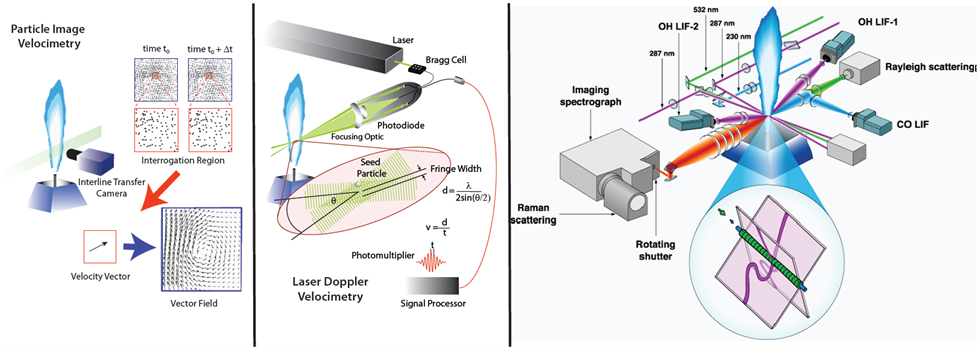Flame Chemistry
Research in the Flame Chemistry and Diagnostics Laboratory focuses on developing a detailed understanding of the chemistry of combustion through a coordinated program of diagnostic development, experimental study of simple flames, and flame chemistry modeling. The goal is to provide a rigorous basis for elucidating chemical mechanisms of combustion. The experimental program concentrates on the developing and applying state-of-the-art diagnostics, based on both laser and mass spectrometer techniques, for measuring key combustion chemical species concentrations. These diagnostics are used to study simple, laboratory-based model flames.
Recent CRF work has focused on a newly developed mass spectrometer, which allows our researchers to detect isomer-specific combustion intermediates. Vacuum ultraviolet photoionization ionization molecular beam mass spectrometry has been demonstrated to be an exceptional method for determining the chemical compositions of complex flames. We apply this tool to study a variety of different flames using hydrocarbon fuels representing the major classes of chemicals appearing in modern fuel blends: alkanes, alkenes, alkynes, cyclic hydrocarbons, and aromatics. Our latest efforts include investigating the combustion chemistry of oxygenated compounds likely to be found in the next generation of biomass-derived alternative fuels, e.g. alcohols, ethers, and esters.














